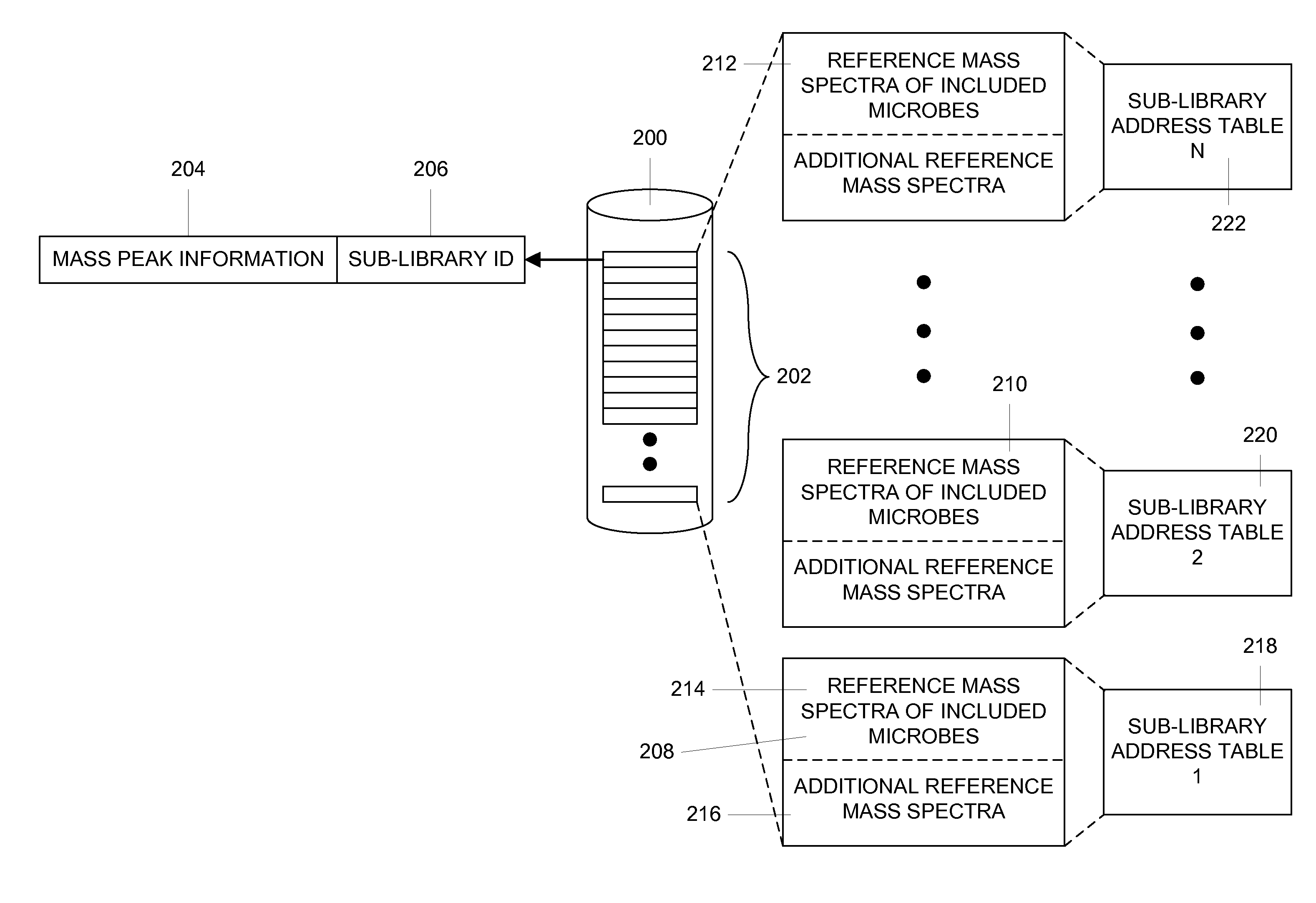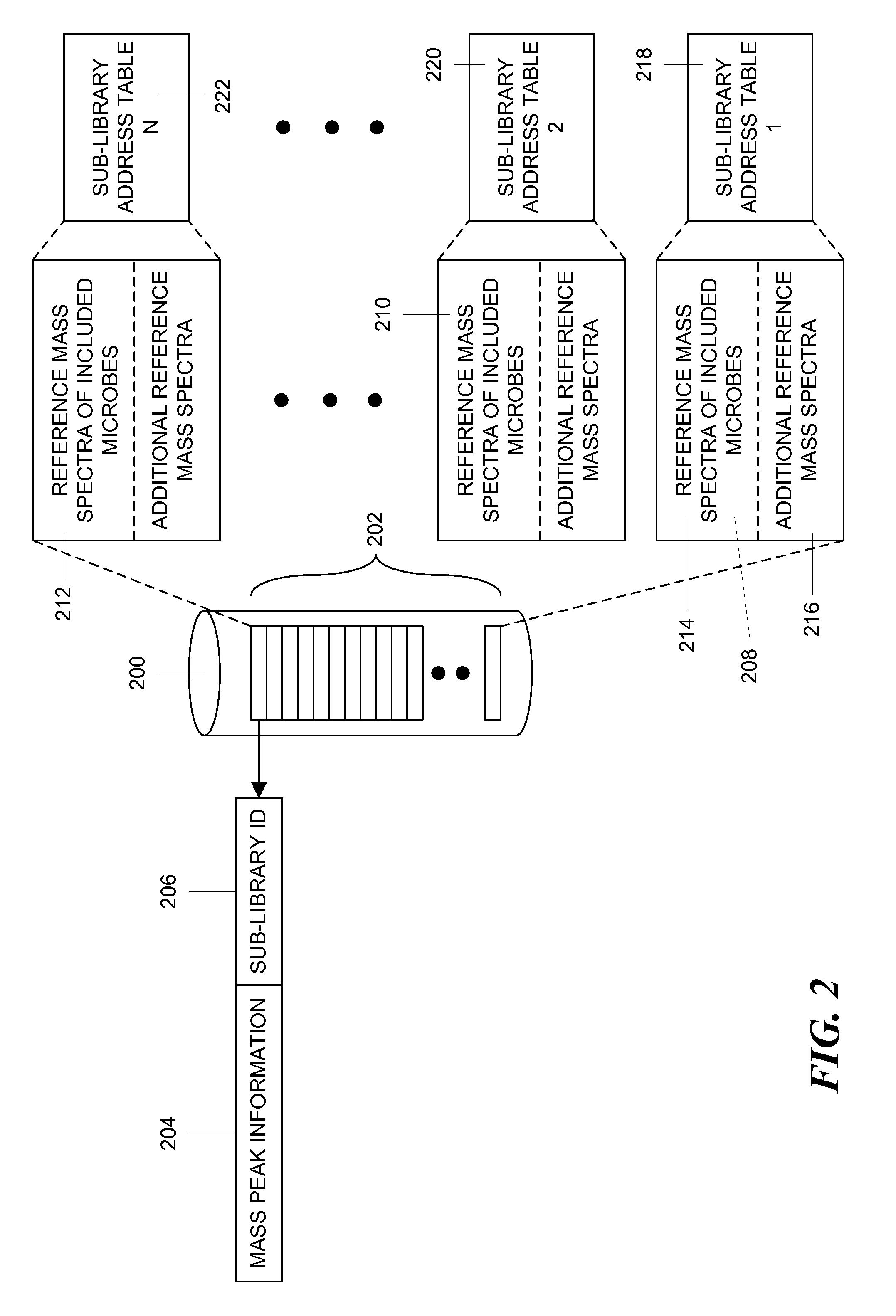Multi-Stage Search for Microbe Mass Spectra in Reference Libraries
- Summary
- Abstract
- Description
- Claims
- Application Information
AI Technical Summary
Benefits of technology
Problems solved by technology
Method used
Image
Examples
Embodiment Construction
Steps in the inventive method are shown in FIG. 1. This process begins with step 100 and proceeds to step 102 where microbe identification procedures are conducted in order to determine the statistical prevalence of microbes in sample routinely handled by a particular laboratory. Since laboratories routinely perform microbe identification tests by a variety of well-known techniques, this statistical distribution of microbe types may already be known. If not, it can be readily determined.
Then, in step 104, the library of reference mass spectra is divided into a hierarchy of sub-libraries, each of which contains the reference mass spectra of selected microbes. The sub-library at the lowest level of this hierarchy contains the reference mass spectra of the most prevalent microbes in the laboratory and each higher sub-library contains the reference mass spectra of the next most prevalent microbes, etc. This arrangement is illustrated schematically in FIG. 2. The database 200 holds a plu...
PUM
 Login to View More
Login to View More Abstract
Description
Claims
Application Information
 Login to View More
Login to View More - R&D
- Intellectual Property
- Life Sciences
- Materials
- Tech Scout
- Unparalleled Data Quality
- Higher Quality Content
- 60% Fewer Hallucinations
Browse by: Latest US Patents, China's latest patents, Technical Efficacy Thesaurus, Application Domain, Technology Topic, Popular Technical Reports.
© 2025 PatSnap. All rights reserved.Legal|Privacy policy|Modern Slavery Act Transparency Statement|Sitemap|About US| Contact US: help@patsnap.com



